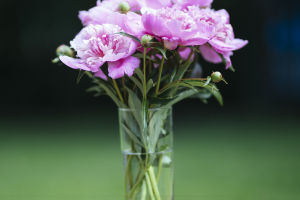In the world of essential oils, there is one type of bottle that stands out: the brown essential oil bottle.
Whether in a professional incense shop or on the shelves of household care products, these brown bottles always have a place.
Why are they so popular? This question has sparked curiosity. In this article, we will explore the allure of brown essential oil bottles, why they are so favored, and their unique position in the world of essential oils.
Origins and History
Let's delve into the origins and history of brown essential oil bottles.
The use of these bottles can be traced back a long way, with early apothecaries and herbalists starting to use them to store various herbs and liquid remedies. Brown glass itself has certain properties; it effectively protects essential oils from light damage, preventing them from losing their potency when exposed to sunlight.
Moreover, brown bottles can also help reduce oxygen permeation, thus extending the shelf life of essential oils. These characteristics made brown essential oil bottles the preferred choice of herbalists and traditional apothecaries. Over time, the use of these bottles gradually transitioned into the modern world of essential oils.
Protective Benefits for Essential Oils
The primary reason brown essential oil bottles are so highly regarded is due to their excellent protection of the oils.
Essential oils are highly volatile substances, easily influenced by external environmental factors that can compromise their effectiveness. Light, oxygen, and temperature are the three main enemies of essential oils, and brown glass bottles are designed to combat these issues.
1. Ultraviolet rays can break down the chemical components of essential oils, rendering them ineffective. Brown glass bottles effectively block most light from entering, reducing the damage light can cause to essential oils. This is why many essential oil bottles are dark brown or amber.
2. Oxygen can cause oxidation, leading to the spoilage of essential oils. Brown glass bottles have good sealing properties, reducing oxygen permeation and extending the shelf life of the oils.
3. Essential oils are sensitive to temperature, with high temperatures accelerating their evaporation and degrading their quality. Brown glass bottles can to some extent insulate against external temperature changes, maintaining the stability of the oils.
So, the design of brown essential oil bottles wasn't a passing trend but a result of long-term practice and refinement to provide the best protection for essential oils.
Unique Appearance and Cognitive Effects
In addition to its functional advantages, the brown essential oil bottle also has a unique appearance, another reason for its popularity. Brown glass bottles have an antique, natural look, giving a sense of stability and nobility. This appearance not only evokes thoughts of ancient herbal medicine and traditional remedies but also aligns with the modern psychological desire for natural and healthy lifestyles.
The color of the brown bottle also complements the characteristics of the essential oils themselves. Many essential oils have a brown or amber hue because they are extracted from plants, and contain rich nutrients. The brown bottle harmonizes with the colors of these oils, creating a unified and harmonious overall package.
Additionally, there's a cognitive effect in psychology where brown gives a sense of stability and reliability. This feeling can influence people's perception and evaluation of the product, giving brown essential oil bottles a subconscious sense of trust and favorability.
Environmental Awareness and Sustainable Development
With the rising awareness of environmental protection, people are paying more attention to the sustainability and eco-friendliness of packaging.
Brown essential oil bottles are made of glass, a recyclable material with minimal impact on the environment. In contrast, plastic bottles, while lightweight and cheap, contribute significantly to pollution.
As a result, many essential oil brands opt for brown glass bottles as packaging, not only to protect the oils but also to align with environmental principles. This is another reason why brown essential oil bottles are more popular in today's era.
Conclusion
Brown essential oil bottles are not only the optimal choice for preserving essential oils but also a reflection of brand image and a commitment to environmental ideals. When we pick up a brown essential oil bottle, we might imagine the history, science, and respect for nature that this simple little bottle embodies.


